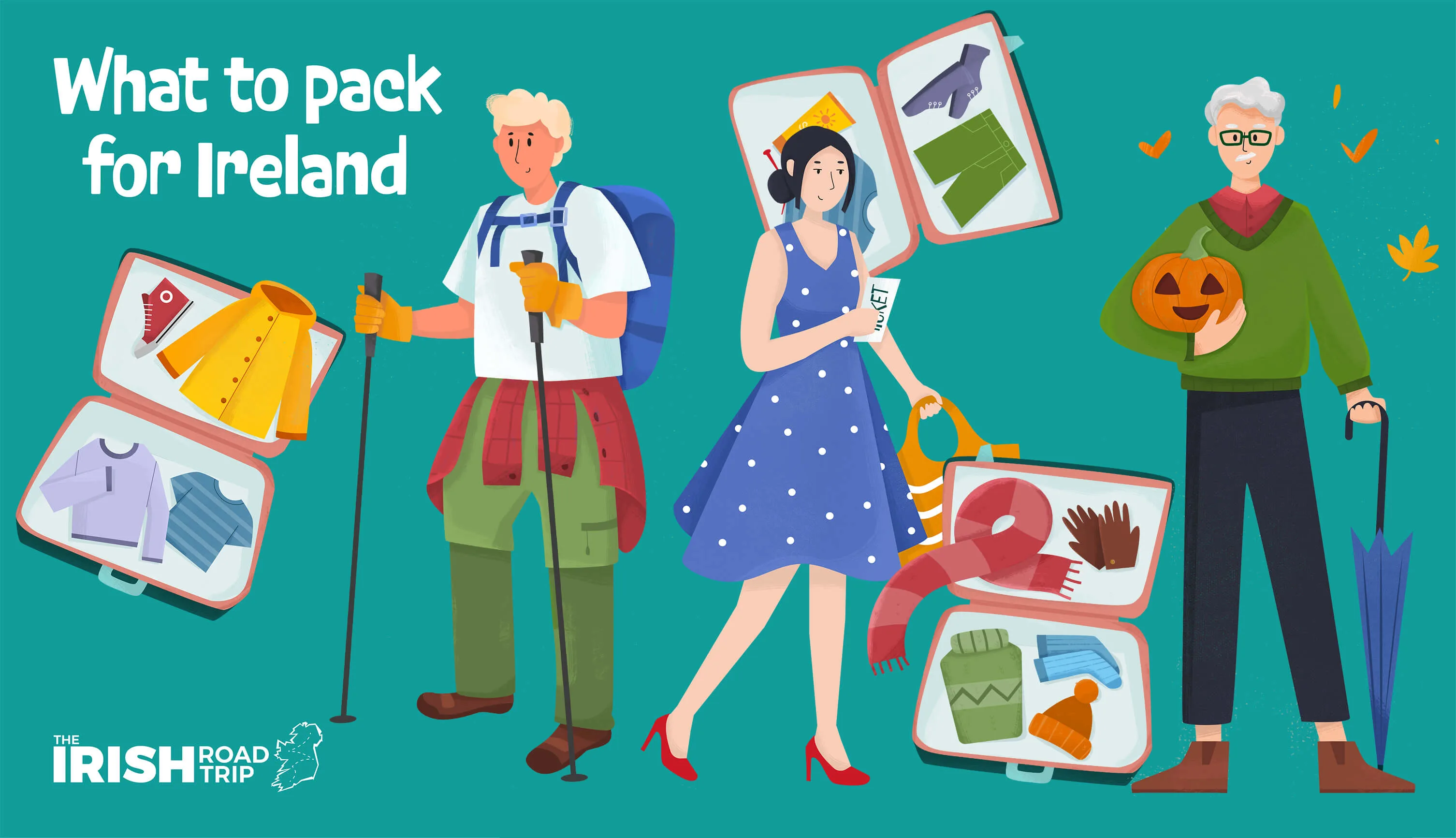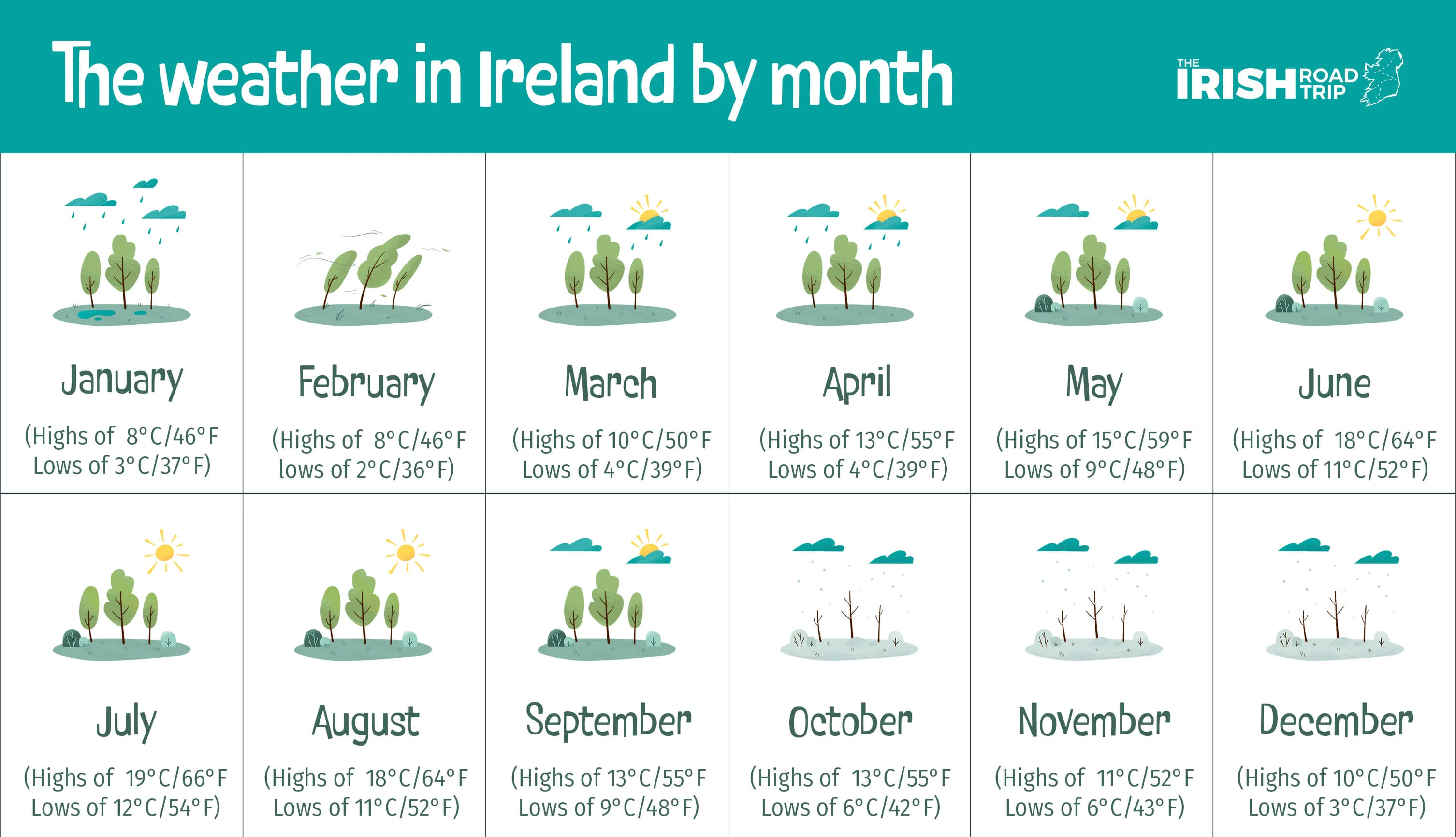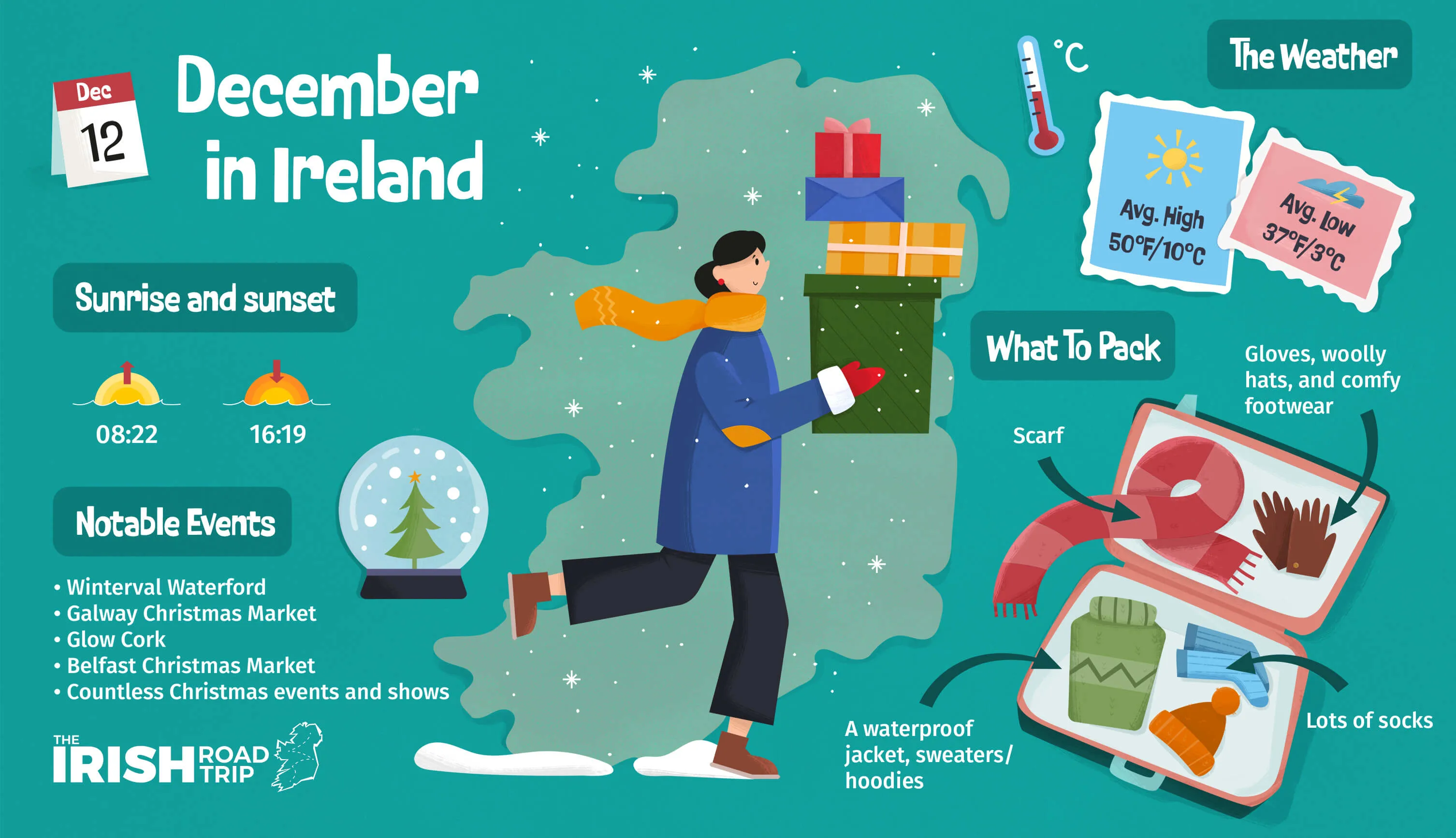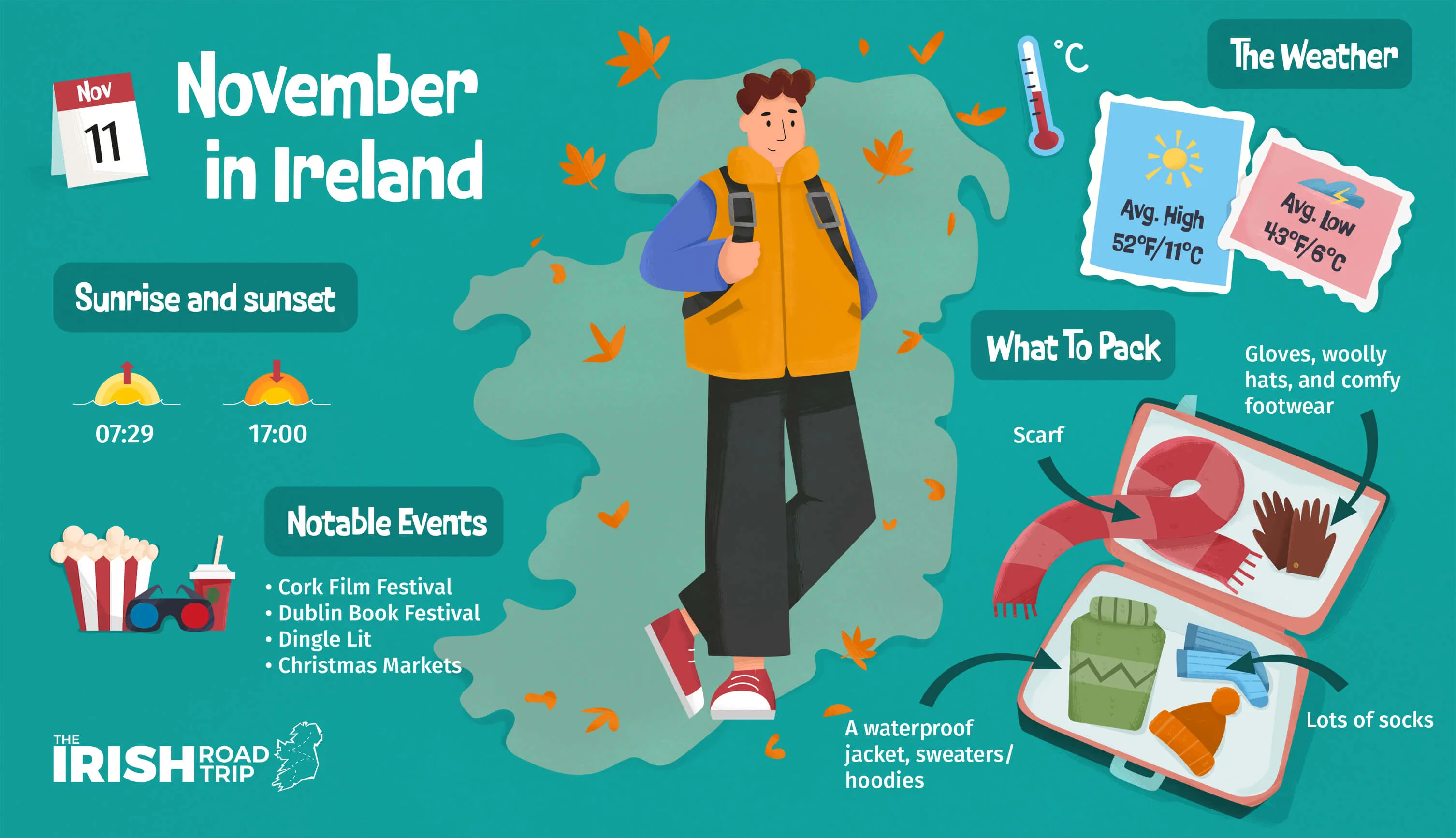Many guides on what wear in Ireland are written by writers trying to get you to buy something.
And there’s nothing really wrong with that.
However, many packing lists for Ireland are just glorified sales brochures, packed with things you don’t really need.
This guide contains no affiliate links – just good solid advice on what to pack for Ireland from someone that has spent the last 33 years here (and the last 5 creating the largest library of Irish road trip guides available anywhere!).
Some quick need-to-knows about what to wear in Ireland

Right – let’s get you up-to-speed on what to pack for a trip to Ireland nice and quickly.
1. Be wary of what you see online
As mentioned in the introduction, most packing lists for Ireland try to push you towards buying unnecessary items. Take everything you see online about what to pack for Ireland with a pinch of salt.
2. A rule of thumb is to pack for all seasons
The weather in Ireland can be very unpredictable and it’s not uncommon to experience every season in one day. It’s worth bringing a variety of clothing to suit every type of weather regardless of when you visit, e.g. a rain coat, a warm jumper etc.
3. Where you’re from matters
If you’re from somewhere particularly cold, you may find winter in Ireland mild and pleasant. On the other end of the spectrum, if you’re from a hot or tropical climate, summer in Ireland (depending on the kind of summer we’re having that year) can feel a little cool. See our guide to the best time to visit Ireland if you’re under of when to visit!
4. Layers are your friend
One of the most useful what to wear in Ireland travel tips is to bring plenty of layers. If it gets too warm, you can take them off. If it gets too cold, you can throw one on.
5. Don’t stress
Don’t worry too much about what to pack for Ireland – once you have the essentials (especially the expensive essentials, like a coat), you’re sorted. If worst comes to worst you can buy what you need when you land!
4 steps that’ll help you figure out what to pack for Ireland

Photos via Shutterstock
You’ll find what to wear in Ireland for every month further down. But before you scroll, it’s worth noting that no Ireland packing list will exactly suit your needs.
So, with this in mind, it’s worth follow the below steps so that you ensure you bring everything you need with you.
Step 1: Understand the seasons
It’s worth having a good understanding of the different seasons in Ireland before you do anything else.
Above, you’ll get a sense of average temperatures for each chunk of the year. This will help you when you arrive at step 2.
Step 2: List out your essentials

The most useful step when trying to decide what to wear in Ireland is to list out your essentials.
These are the things you can’t do without, regardless of time of year. Here are some examples:
- Valid passport
- Adaptor – Ireland uses Type G power plugs with a 230V supply voltage and a 50Hz frequency.
- Camera, phone, tablet, laptop, headphones etc.
- Chargers
- Medicine
- Toiletries
- Reusable water bottle
- Day bag or small rucksack
Step 3: Packing for specific activities
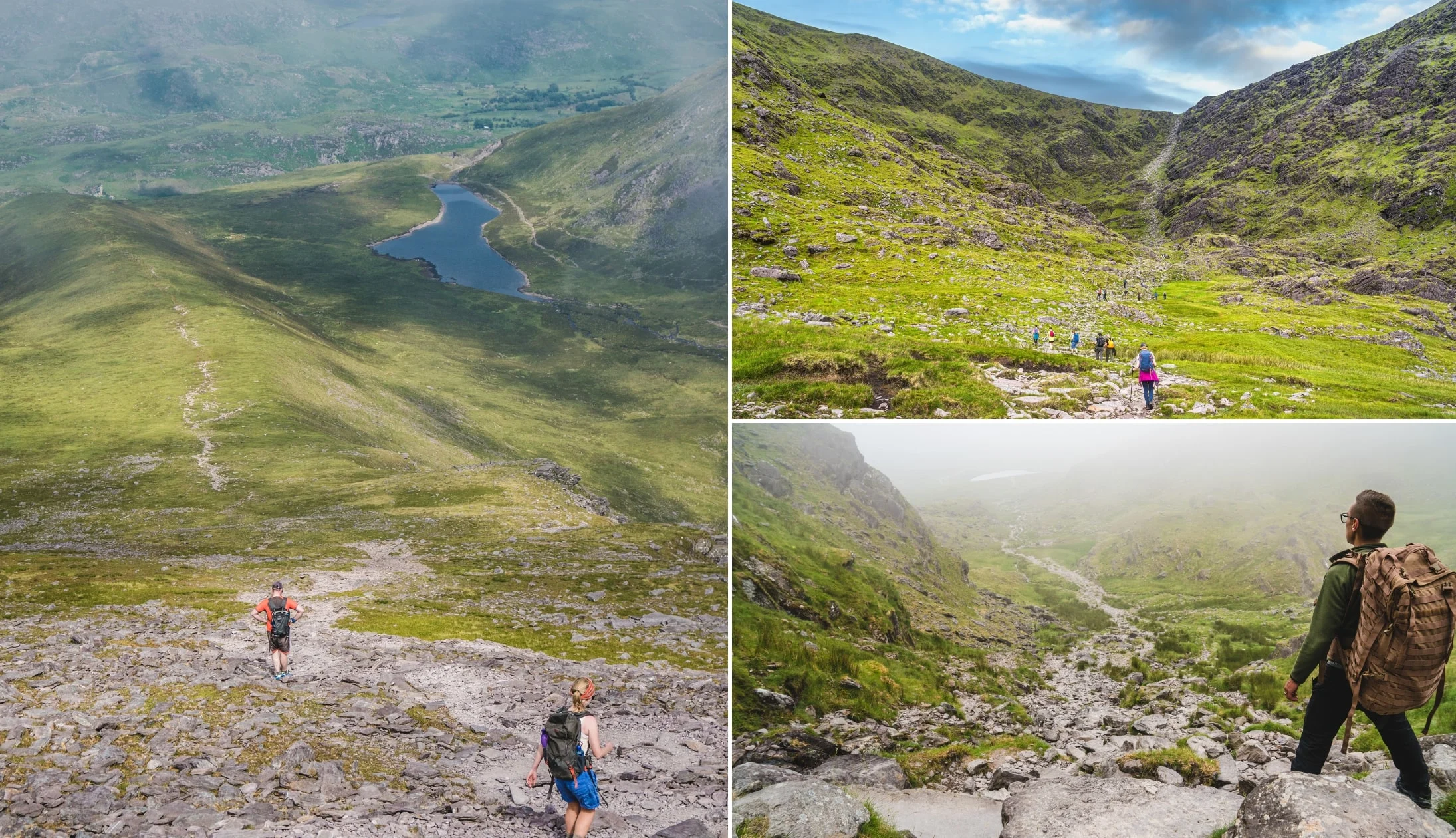
Photos via Shutterstock
There’s endless things to do in Ireland, from hikes and walks to museums, castles and more.
Some activities will require very specific items. If you’re an avid hiker, then waterproofs, hiking shoes, and a comfortable backpack are a must.
For a city break, pack comfortable shoes if you plan to explore on foot.
Swimwear is a must for summer beach breaks, and in the winter, don’t forget extra layers to help keep you sheltered from the wind during coastal walks.
Step 4: Remember that Ireland is fairly casual

Photos by The Irish Road Trip
Generally speaking, Ireland is quite casual. Most people wear jeans and a shirt or blouse when eating out in restaurants or heading to the pub.
However, if you plan to enjoy some fine dining or want to hit up a fancy bar, then this calls for some more formal attire.
In this case, we’d recommend planning ahead and packing something a little nicer.
Step 5: Take weather forecasts with a pinch of salt
Before your trip, it’s a good idea to double-check the weather in advance to give yourself a better idea of what to pack.
Take the forecast from weather apps with a pinch of salt, as (like we’ve mentioned before) the weather in Ireland sometimes has its own plans… so pack for every scenario!
What to wear in Ireland in summer
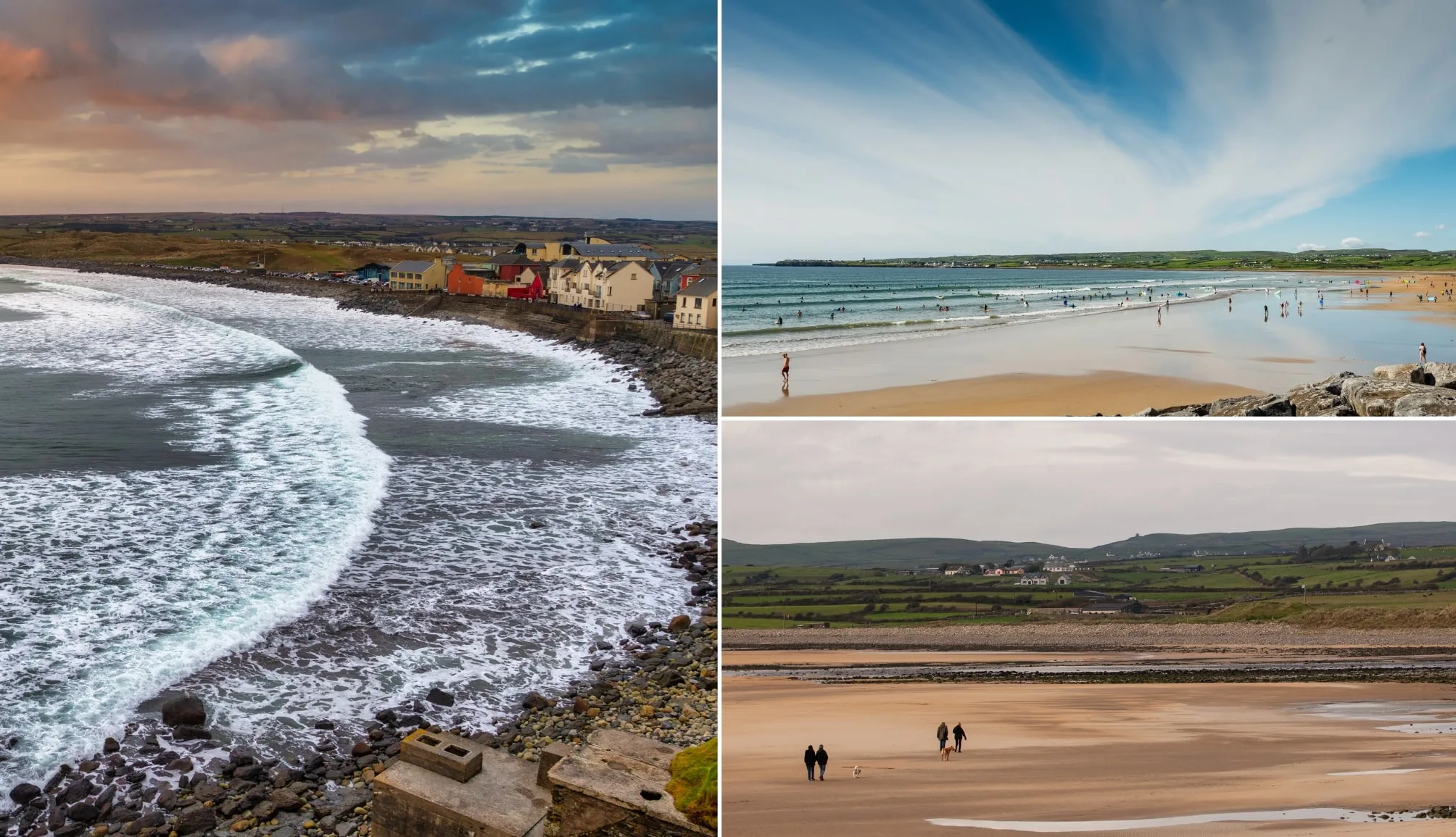
Photos via Shutterstock
Summer in Ireland consists of long days, with the sun rising at around 5am and setting between 9 and 10pm.
Normally, Irish summers are pleasant, with the occasional heatwave (if you’re lucky).
However, despite it being the driest time of the year, there’s still a fair amount of rain! So, remember to pack a waterproof jacket.
Irish summers vary from year to year, but keep reading below for a general idea of what to expect:
June
June in Ireland has average highs of 18°C and average lows of 11.6°C. June 2020 had changeable weather with above average rainfall in many areas.
In 2021, it was relatively dry in most parts of the country but warm and sunny in the South East.
However, June 2022 had above average rainfall in most areas in the country, particularly in the West.
TIP: See our guide on what to wear in Ireland in June for more.
July
July in Ireland has average highs of 19°C and average lows of 12°C.
The weather in 2020 was cool and wet, however, in 2021, there was sunny weather and several heatwaves.
2022 was the hottest July on record, with warm and dry temperatures.
TIP: See our guide on what to wear in Ireland in July for more.
August
In August in Ireland, there are average highs of 18°C and average lows of 12°C. In 2020, the weather was warm, wet, and stormy, whereas 2021 was mild and changeable.
2022 on the other hand, saw record temperatures accompanied by dry and sunny weather.
TIP: See our guide on what to wear in Ireland in August for more.
What to pack for Ireland in summer:
- Short-sleeved t-shirts (2-3)
- Shorts (2)
- Lightweight shirt or dress
- Light sweater or cardigan
- Longsleeve t-shirt
- A pair of pants (jeans, trousers, or leggings)
- Lightweight waterproof jacket
- Swimwear
- Hat
- Sunglasses
- Suncream
- Comfortable shoes
- Summer sandals
What to wear in Ireland in winter

Photos via Shutterstock
Travelling in Ireland during winter comes with a bit of risk. The days are shorter (the sun rises between 8am and 9am and sets between 4pm and 5pm) and the weather can be a little miserable.
But with that being said, the weather does vary, so you could experience some clear and crisp days, plus it’s the off-season, so there are fewer crowds and cheaper prices.
December
December in Ireland has average highs of 10°C and average lows of 3°C.
In 2020, the weather was wet, windy and cool, but 2021 had mild and changeable weather with occasional windy days.
December 2022 was dry during the first half of the month, and wet during the second half.
TIP: See our guide on what to wear in Ireland in December for more.
January
In January in Ireland, there are average highs of 8°C and average lows of 3°C.
The weather in 2020 was relatively dry and mild, however, in 2021, many areas experienced above-average rainfall and cool temperatures.
January 2022 had mild temperatures and was very dry.
TIP: See our guide on what to wear in Ireland in January for more.
February
February in Ireland has average highs of 8°C and average lows of 2°C.
February 2020 was wet and windy, and February 2021 was relatively mild and wet.
The following year in 2022, the weather was wet, windy, and mild.
TIP: See our guide on what to wear in Ireland in February for more.
What to pack for Ireland in winter:
- Short-sleeved t-shirt or vest (2)
- Longsleeved t-shirts (2)
- Sweatshirts or sweaters (2)
- Pants (jeans, trousers, or leggings) (2-3)
- Winter scarf
- Winter hat (preferably waterproof)
- Winter gloves (preferably waterproof)
- Thick winter socks (4+)
- A warm waterproof winter jacket
- Sunglasses (yes, really!)
- Winter boots/shoes
What to wear in Ireland in spring

Photos via Shutterstock
Spring is a wonderful time to visit Ireland, with the worst of the winter weather over, and the days transitioning to become longer and milder.
In March, the sun rises between 6:15am and 7:15am, setting between 6pm and 7pm.
However, by May, the sun rises at around 5am and sets around 9:30pm, leaving plenty of time for exploring!
March
During March in Ireland, there are average highs of 10°C and average lows of 4.4°C.
March 2020 was rainy, wet, and windy, however, in 2021, the weather was mild and pleasant, and in 2022 it was mild, dry and very sunny!
TIP: See our guide on what to wear in Ireland in March for more.
April
April in Ireland has average highs of 13°C and lows of 4°C. 2020 was mild, sunny, and dry, and in 2021, it was cool, sunny, and very dry.
In 2022, the weather was even better, with mild temperatures and dry and sunny weather overall.
TIP: See our guide on what to wear in Ireland in April for more.
May
In Ireland in May, you can expect average highs of 13°C and average lows of 9°C.
May 2020 was sunny and very dry, whereas in 2021, many parts of the country were wet and cool.
May 2022 brought another change in the weather, with mild temperatures alongside sunny and dry weather.
TIP: See our guide on what to wear in Ireland in May for more.
What to pack for Ireland in spring:
- Short-sleeved t-shirt or vest (2)
- Longsleeved t-shirts (2)
- Sweatshirts or sweaters (2)
- Pants (jeans, trousers, or leggings) (2-3)
- Light sweater or cardigan
- Lightweight shirt or dress
- Light scarf
- Warm hat
- Thick winter socks (4+)
- A warm waterproof winter jacket
- Sunglasses
- Winter boots/shoes
- Comfortable shoes
What to wear in Ireland in autumn

Photos via Shutterstock
Autumn may be our favourite time to visit Ireland!
While the days are beginning to become shorter and the temperatures drop right before winter, the fall foliage is breathtaking and there are fewer crowds compared to the summer.
At the beginning of autumn (September), the sun rises at around 6:40am and sets at 8:15pm, however, by November, the sun rises at 7:30am and sets at around 5pm.
September
In September in Ireland, there are average highs of 13°C and average lows of 9°C.
September 2020 was warm during the first of the month, then cooler during the second half.
In 2021, there were record-breaking temperatures in some parts of the country, with warm and dry weather throughout.
September 2022 was mostly mild, with wet weather in the South, East, and the Midlands.
TIP: See our guide on what to wear in Ireland in September for more.
October
October in Ireland has average highs of 13°C and average lows of 6°C.
In 2020, the weather was rainy, windy, and cool, whereas in 2021 and 2022, it was mild and rainy.
TIP: See our guide on what to wear in Ireland in October for more.
November
In November in Ireland, you can expect average highs of 11°C and average lows of 6.2°C.
November 2020 was mild and wet, although it was a little drier in the east of the country.
In 2021, it was dry and mild, although it was sunnier in the south, whereas in 2022, it was wet, warm, and windy.
TIP: See our guide on what to wear in Ireland in November for more.
What to pack for Ireland in autumn:
- Short-sleeved t-shirt or vest (2)
- Longsleeved t-shirts (2)
- Sweatshirts or sweaters (3)
- Pants (jeans, trousers, or leggings) (2-3)
- Light scarf
- Light gloves
- Warm hat
- Thick winter socks (4+)
- A warm waterproof jacket
- Sunglasses
- Winter boots/shoes
- Comfortable shoes
FAQs about what to wear in Ireland
We’ve had a lot of questions over the years asking about everything from ‘What is the fashion in Ireland like?’ to ‘What Ireland packing list covers every possible weather type?”.
In the section below, we’ve popped in the most FAQs that we’ve received. If you have a question that we haven’t tackled, ask away in the comments section below.
What do I need before going to Ireland?
The most essential item when packing for Ireland is a valid passport. After that, make a list of the essentials depending on the month that you’re visiting (see our suggestions above).
What should you wear in Ireland?
What to wear in Ireland will be dependant on 1, when you visit and 2, what activities you have planned. In the cooler months, you’ll want warm clothing and plenty of layers. For the milder months, lots of light layers come in handy.
Does Ireland have a dress code?
The only time you tend to encounter a dress code in Ireland is at fine dining restaurants (formal attire required) and in some pubs/nightclubs. Ireland is casual for the most part.
Keith O’Hara has lived in Ireland for 35 years and has spent most of the last 10 creating what is now The Irish Road Trip guide. Over the years, the website has published thousands of meticulously researched Ireland travel guides, welcoming 30 million+ visitors along the way. In 2022, the Irish Road Trip team published the world’s largest collection of Irish Road Trip itineraries. Keith lives in Dublin with his dog Toby and finds writing in the 3rd person minus craic altogether.

